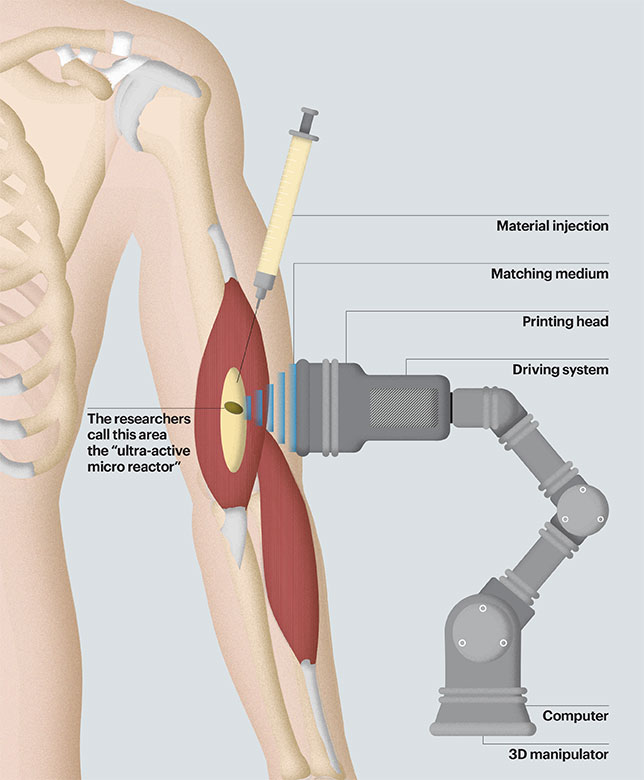3D printing usually relies on the force of light and heat to create objects, but researcher Muthukumaran Packirisamy and his team have discovered how to do it with ultrasound waves, known as direct-sound printing. The use of sound waves enables objects to be printed in hard-to-reach spaces such as the interior of an airplane, or even inside the human body.
Direct-sound printing harnesses energy from a process called cavitation, explained Mohsen Habibi, another researcher on the project. Cavitation occurs when a substance is stimulated by force – from heat, light, or in this case, sound – and small bubbles begin to form. “As an engineer, we are taught that cavitation is bad,” Dr. Habibi said, since you normally wouldn’t want air pockets in a piece of machinery. In this case, it’s necessary. “The vital component is to produce bubbles using sound waves, then drive the reaction in a path that actually creates an object at the end,” he said.

It’s similar to how resin is used to preserve plants or insects – but instead of having to pour the resin in one go and seal the object after, direct-sound printing can be done beyond the barrier, in a matter of seconds.
One of the major implications for direct-sound printing is in the medical field. Current iterations of 3D printing are mainly used to create models of body parts or medical devices, to be used for teaching or to help educate patients preparing for surgery. Direct-sound printing could be used for something like inserting a medical device into a patient’s body without needing to break the skin. Dr. Packirisamy, an engineering professor and director of Concordia University’s optical-bio microsystems lab has been hearing from medical professionals keen to learn more about the work; he said it affirms just how much the technology is needed.
“This technology can do something that so far can’t be done with other technologies … so it’s important for us, how we shape it into real products and future applications.”
What a significant research. Another big step to help with the high-tech industry and people’s life.